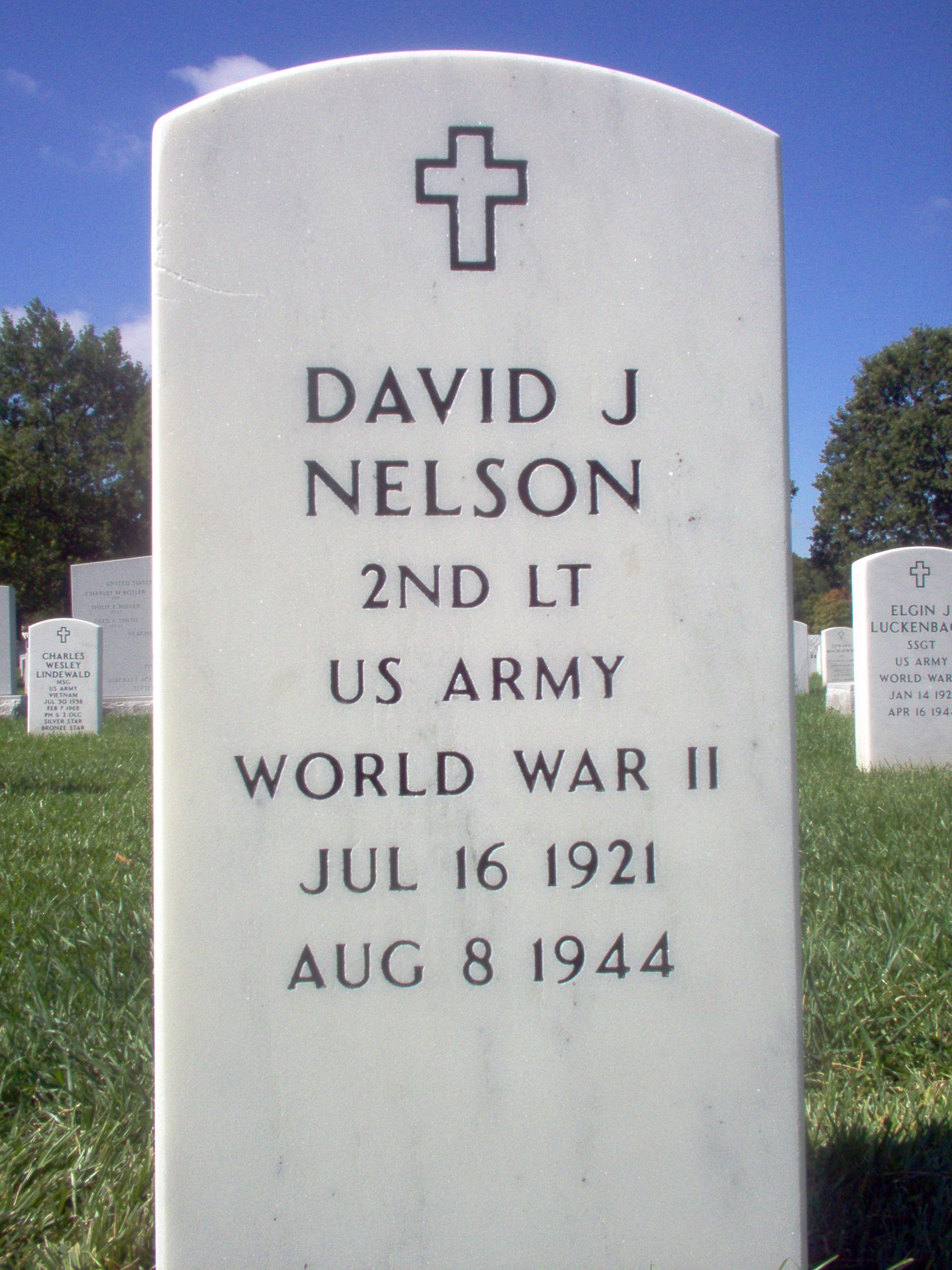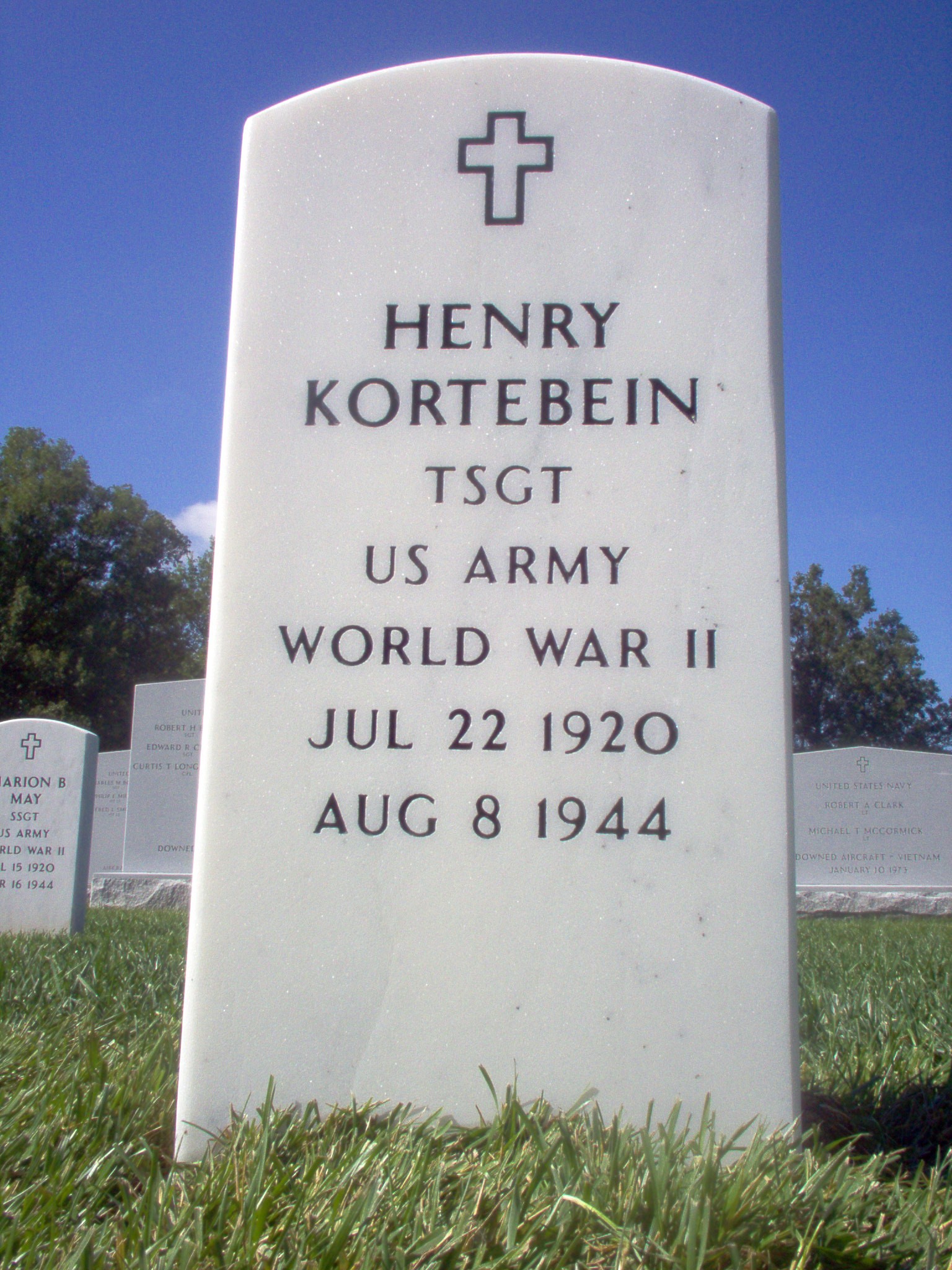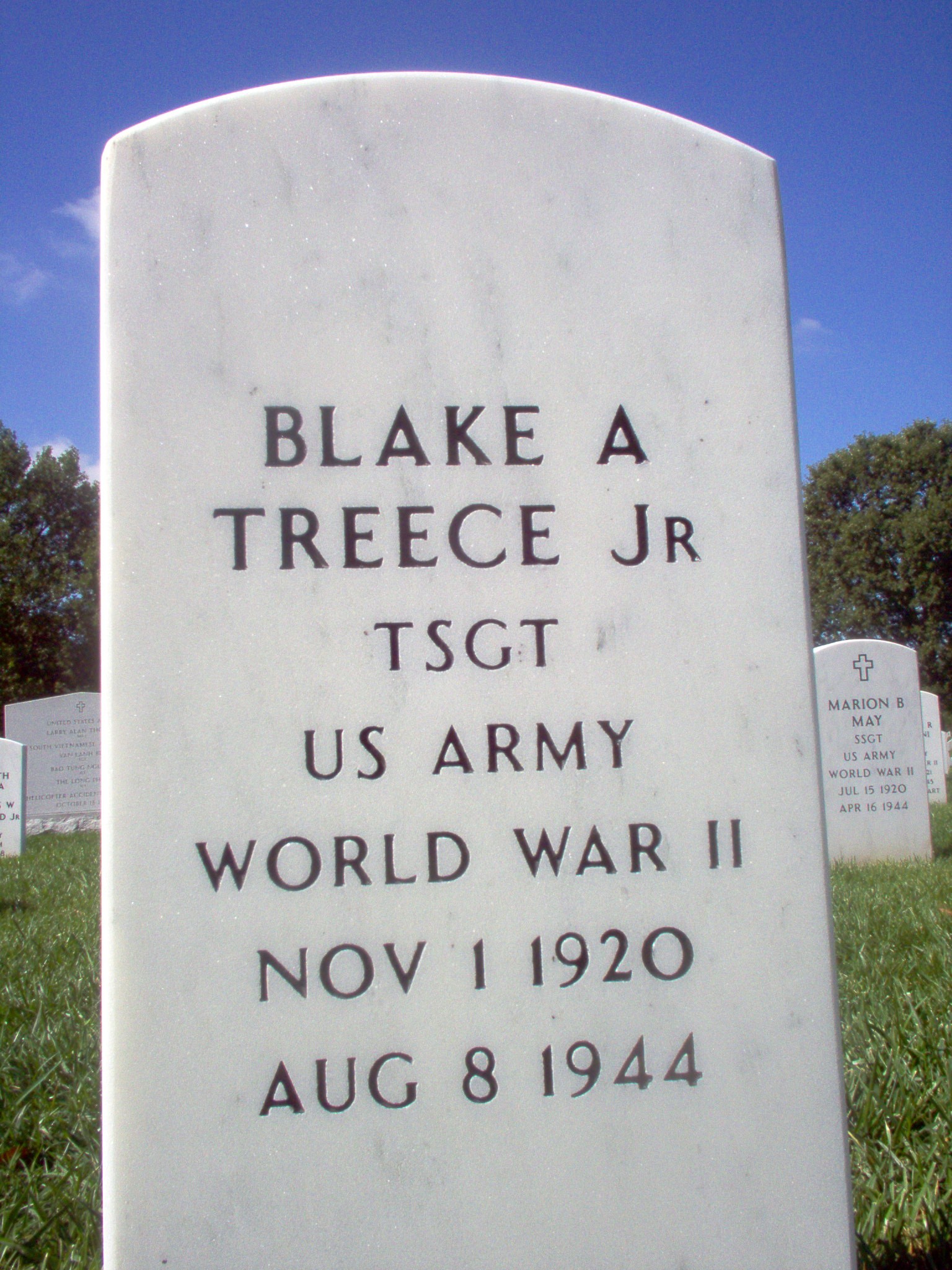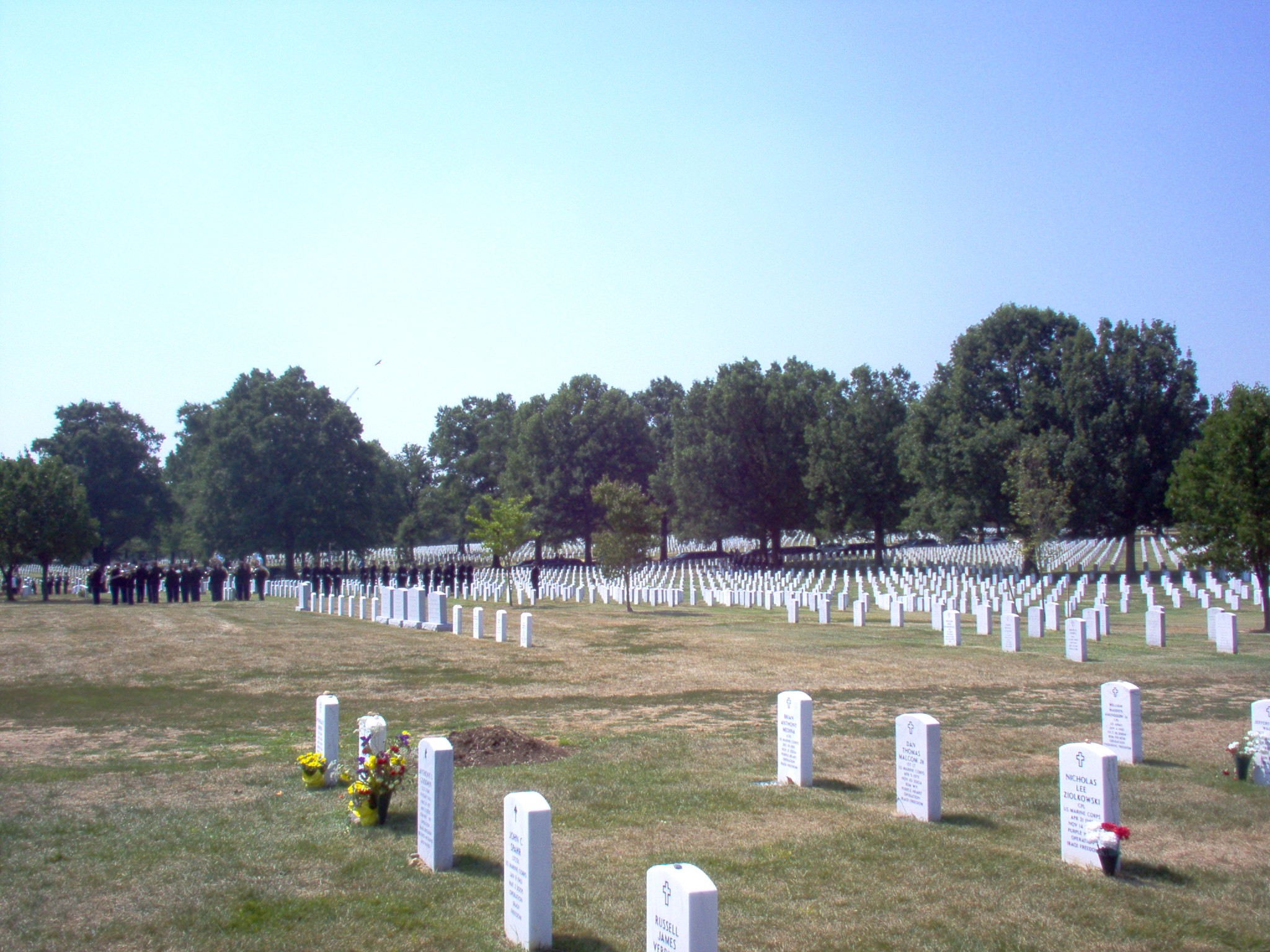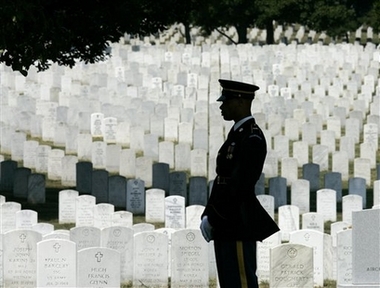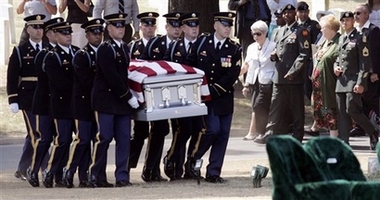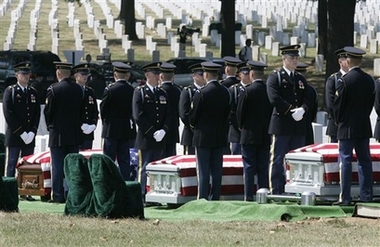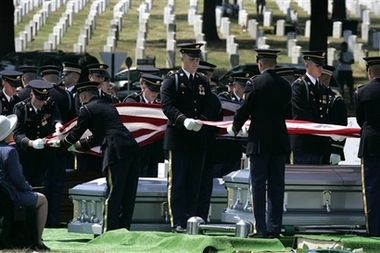Wednesday, August 23, 2006
The remains of three airmen missing in action from a World War II combat mission in 1944 have been identified and returned to their families for burial, the Pentagon said Wednesday.
Second Lieutenant David J. Nelson, of Chicago; Technical Sergeant Henry F. Kortebein, of Maspeth, New York, and Technical Sergeant Blake A. Treece, Jr., of Marshall, Arkanas, are to be buried at Arlington National Cemetery on Thursday, the Pentagon said.
Nelson, Kortebein and Treece were among nine airmen aboard a B-17G Flying Fortress on a mission to bomb targets near Caen, France, on Aug. 8, 1944, when the plane was hit by enemy fire and crashed near a village south of Caen.
German forces and French villagers recovered some of the remains of the crew and buried them nearby. Advancing U.S. forces found additional remains, and six of the nine men ultimately were identified. But Nelson, Kortebein and Treece remained unaccounted for.
In August 2002, a team from the Joint POW/MIA Accounting Command, which is responsible for accounting for missing servicemen, was told that a French aircraft wreckage hunting group had found a crash site near the village where the B-17G went down. The U.S. team surveyed the site, excavated it in July 2004 and recovered human remains, personal effects and crew-related materials in the wreckage.
Also found were six unexploded 250-pound bombs.
David J. Nelson
Second Lieutenant, U.S. Army Air Forces
Service # O-552168
322nd Bomber Squadron, 91st Bomber Group, Heavy
Entered the Service from: Illinois
Died: 8-Aug-44
Missing in Action or Buried at Sea
Tablets of the Missing at Brittany American Cemetery
St. James, France
Awards: Air Medal with Oak Leaf Cluster, Purple Heart
Henry F. Kortebein
Technical Sergeant, U.S. Army Air Forces
Service # 12127310
322nd Bomber Squadron, 91st Bomber Group, Heavy
Entered the Service from: New York
Died: 8-Aug-44
Missing in Action or Buried at Sea
Tablets of the Missing at Brittany American Cemetery
St. James, France
Awards: Air Medal with Oak Leaf Cluster, Purple Heart
Blake A. Treece, Jr.
Technical Sergeant, U.S. Army Air Forces
Service # 14033465
322nd Bomber Squadron, 91st Bomber Group, Heavy
Entered the Service from: Arkansas
Died: 8-Aug-44
Missing in Action or Buried at Sea
Tablets of the Missing at Brittany American Cemetery
St. James, France
Awards: Air Medal with Oak Leaf Cluster, Purple Heart
Warren D. Godsey
Sergeant, U.S. Army Air Forces
Service # 37534026
322nd Bomber Squadron, 91st Bomber Group, Heavy
Entered the Service from: Missouri
Died: 8-Aug-44
Buried at: Plot D Row 16 Grave 11
Normandy American Cemetery
Colleville-sur-Mer, France
Awards: Air Medal with 2 Oak Leaf Clusters
Charles Sherrill
Second Lieutenant, U.S. Army Air Forces
Service # O-757927
322nd Bomber Squadron, 91st Bomber Group, Heavy
Entered the Service from: Indiana
Died: 8-Aug-44
Buried at: Plot J Row 26 Grave 15
Normandy American Cemetery
Colleville-sur-Mer, France
Awards: Air Medal with 2 Oak Leaf Clusters, Purple Heart
Suffern hero home 62 years later
By BOB BAIRD
COURTESY OF THE JOURNAL NEWS
7 September 2006For more than 60 years, the Collins family of Suffern has told the story of the three brothers who went off to World War II and preserved the memory Richard Collins — the one who never came home.
Even as they passed along a box of newspaper clippings, old photos and letters written to and from the war zones in Europe and the Pacific, Rosemary Collins Schultz said, they thought his story had long ago reached its natural ending.
But in 2003, that changed. A richer and more detailed story of Richard Collins emerged, one that brought him home at last to be buried with his crewmen in Arlington National Cemetery 62 years after he was reported missing in action over France.
Collins, who played varsity hockey, football and baseball, graduated from Suffern High School in 1941. That July, he put aside the ambition he listed in the 1941 Panorama yearbook — “to be a millionaire.”
Collins, the youngest of 12 children, joined the Army Air Corps. In May 1944, he went overseas as a gunner on a B-17. By July, he had been awarded the Air Medal and a presidential citation.
On Aug. 8, two months after D-Day, he was the waist gunner on a B-17, known as the “Chowhound,” a plane children would later build in plastic models. Their goal was to bomb German lines ahead of advancing American forces south of Caen, France.
Witnesses in other bombers and on the ground said the plane was hit and its tail section dropped straight down. The rest spiraled to the ground. It hadn’t yet dropped its bombs.
It took about a week for the family in Suffern to learn he was missing. A year later, he was declared killed in action, but it wasn’t until 1948 that his family concurred, based on identification of a section of jawbone. His remains were buried in one of the American cemeteries in France.
As she shares her uncle’s story now, Connie Collins said of her family, “We all assumed that was the end of the story.” That turned out hardly to be the case.
John Collins learned about his Uncle Richard as he grew up in Suffern. Now a vice president of Avery Dennison, the manufacturer of office and labeling products, he moved to Ohio about 10 years ago and was transferred to England in 2003.
One of his first trips was to France to visit the Cemetery of St. James in Brittany, where he had learned his uncle was laid to rest. During his visit, a conversation with the cemetery caretaker unlocked more of the story — that remains of the crew had been buried by townspeople. Later, they were moved to a temporary military cemetery before being interred at St. James. The wreckage, John Collins was told, was still partially buried at the crash site.
John Collins contacted the 91st Bomber Group, requested his uncle’s records from the National Archives and worked with the Normandy Association for Air Remembrance, which honors those who fought to liberate France.
Over the years, partial remains of Collins and five other crewmen had been recovered. But when a U.S. team from the Joint POW/MIA Accounting Command, or JPAC, excavated the site in June 2004, they found remains and personal effects of the other three crewmen inside the wreckage. John Collins watched their work and was presented with a Holy Name Society medal that belonged to his uncle. “It was pretty nice that they could pull that out of the wreckage,” John Collins said. There were also some tense moments when the JPAC crew found live munitions.
They also found the machine gun Richard Collins operated and the nose section of the plane, complete with the “Chowhound” artwork painted by Tony Starcer, the same artist who decorated the famed “Memphis Belle,” said Rosemary Collins Schultz, Connie Collins’ sister.
It’s likely both artifacts will be donated, possibly within a month or so, to either the Suffern Museum or Suffern Free Library.
John Collins’ sister, Mary, joined him in France in August 2004 as the town where the plane crashed, Lonlay L’abbaye, celebrated the 60th anniversary of its liberation. “The townspeople were so reverent,” Mary Collins said. “Children marched in costumes, and World War II veterans paraded to the center of town to place a plaque as a memorial to the crew.
“It came as a complete surprise to us that the story wasn’t over, that the plane and the men had been found,” Mary Collins added.
But even then, there was more.
On Aug. 24 — 62 years to the day after the old Ramapo Valley Independent newspaper reported Collins missing in action — he and the other eight members of his crew were buried side by side in Arlington National Cemetery.
There were three individual caskets for the crewmen found in the wreckage. Partial remains of Collins and five others were buried in a common casket carried on a flag-draped caisson.
John and Mary Collins, their cousins Rosemary and Connie Collins and their mother, Shirley — the last of the World War II generation — were among about 30 family members at Arlington for the ceremonies.
A night earlier, they met families of the other crewmen, including the widow of Sgt. Gerald Gillies, who gave them a copy of the only known photo of the “Chowhound” crew.
Connie Collins said the events were an opportunity for her generation to set an example for younger family members. “It was an uncle we didn’t know personally, except for the stories. We were honoring our fathers” — Charles Collins had died in 1990 and Thomas Collins in 1995 — “and teaching the younger generation about family.”
It’s all still a bit hard to believe for John Collins. “I just wanted to see Uncle Richard’s grave site,” he said, “but I know a lot more now than the family ever knew.”
GROUP BURIAL POST CHAPEL 11:00
CHARLES BACIGALUPA, 2ND LT, USA POST CHAPEL
RICHARD R. COLLINS, SGT, USA POST CHAPEL
GERALD GILLIES, SGT, USA POST CHAPEL
WARREN GODSEY, SGT, USA POST CHAPEL
HENRY KORTEBEIN, TSGT, USA POST CHAPEL
DAVID J. NELSON, 2ND LT, USA POST CHAPEL
CHARLES SHERRILL, 2ND LT, USA POST CHAPEL
JACK THOMPSON, 1ST LT, USA POST CHAPEL
BLAKE TREECE, TSGT, USA POST CHAPEL
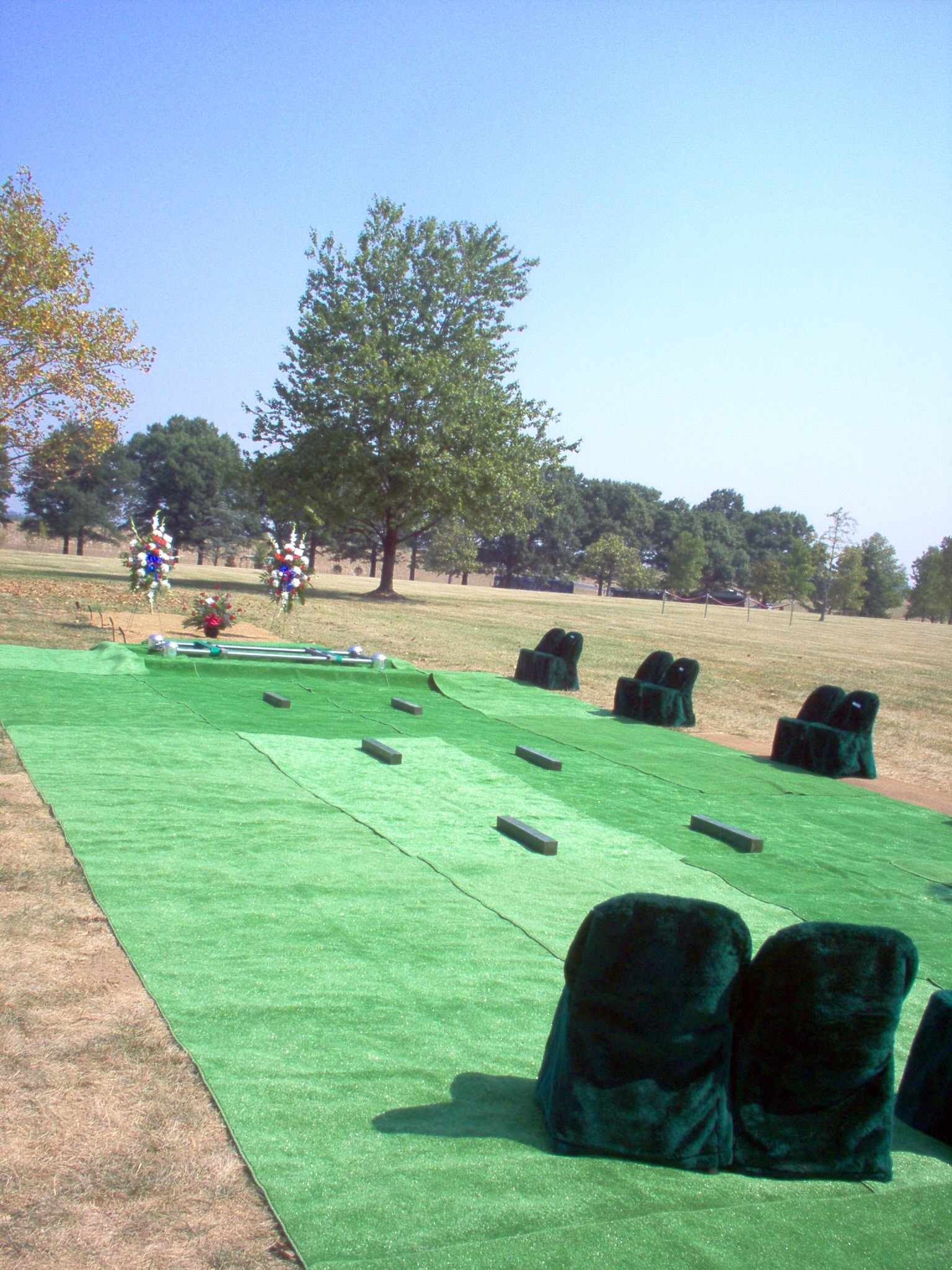
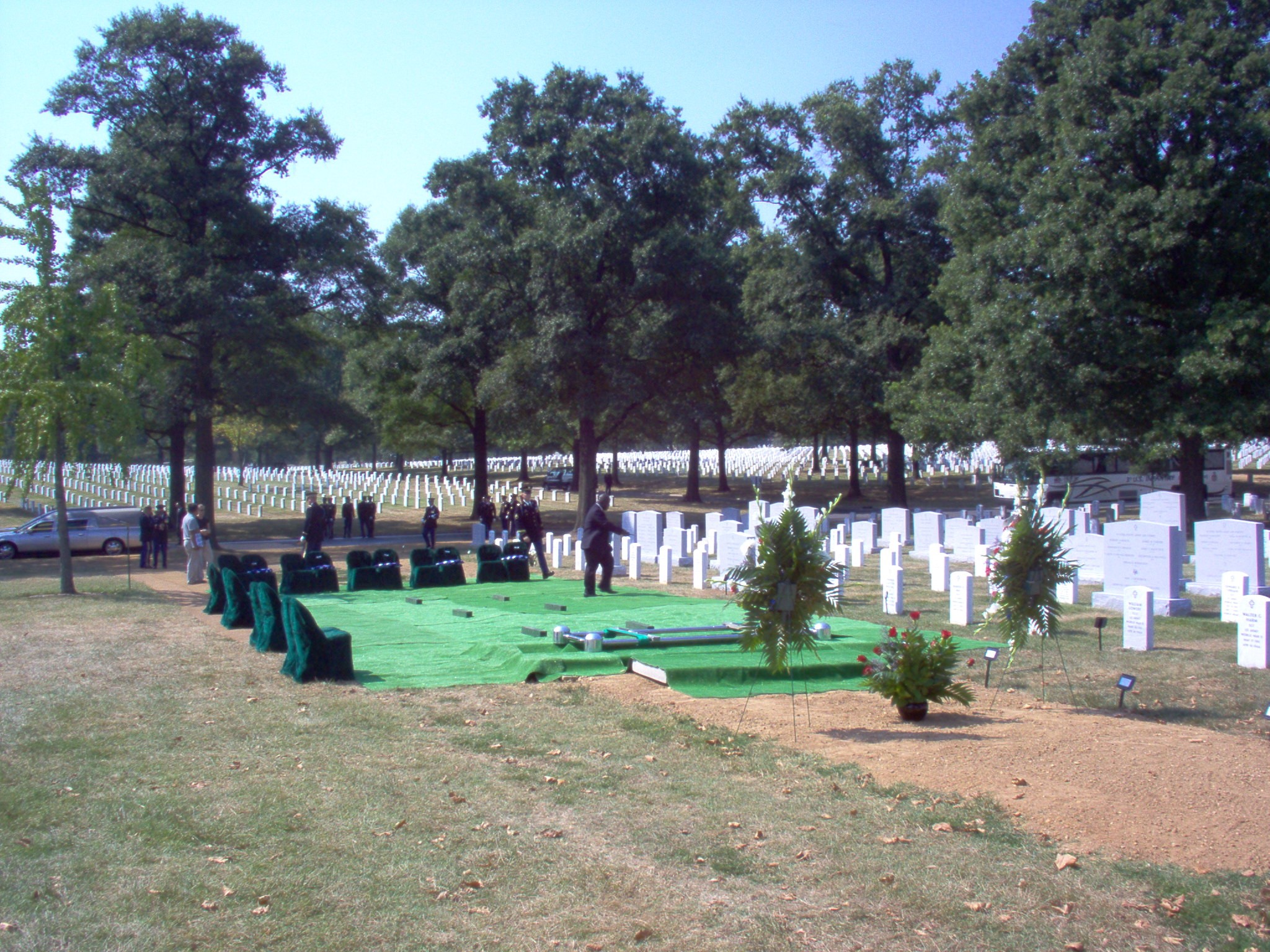
An unidentified honor guard member waits for the start of the funeral of
World War II airmen: Technical Sergeant Henry F. Kortebein, Second Lieutenant David J.
Nelson and Technical Sergeant Blake A. Treece, Jr., at Arlington National Cemetery,Thursday, August 24, 2006.
The remains of three airmen missing in action from a World War II combat mission in 1944 have been identified
and returned to their families for burial
Honor Guard members carry a coffin containing the combined remains of Technical Sergeant
Henry F. Kortebein, Second Lieutenant David J. Nelson and Technical Sergeant Blake A. Treece, Jr.
during funeral services at Arlington National Cemetery Thursday, August 24, 2006. The remains of
three airmen missing in action from a World War II combat mission in 1944 have been identified and
returned to their families for burial
Honor Guard members stand over the flag draped coffins of Technical Sergeant Henry F. Kortebein,
Second Lieutenant David J. Nelson and Technical Sergeant Blake A. Treece, Jr. left, during funeral services
at Arlington National Cemetery Thursday, August 24, 2006. The remains of three airmen missing in action
from a World War II combat mission in 1944 have been identified and returned to their families for burial
Honor Guard members fold the flags that draped the coffins of Technical Sergeant Henry F. Kortebein,
Second Lieutenant David J. Nelson and Technical Sergeant Blake A. Treece, Jr., obscured, rear left, during
funeral services at Arlington National Cemetery on Thursday, August 24, 2006. The remains of three airmen
missing in action from a World War II combat mission in 1944 have been identified and returned to their families for burial
Michael Robert Patterson was born in Arlington and is the son of a former officer of the US Army. So it was no wonder that sooner or later his interests drew him to American history and especially to American military history. Many of his articles can be found on renowned portals like the New York Times, Washingtonpost or Wikipedia.
Reviewed by: Michael Howard

